
Here in the United States (my home country) the White Bear Lake, Minnesota-based loudspeaker manufacturer Magnepan enjoys a singular distinction; many members of the high-end audio press consider all three of the firm’s top models—comprising the 20.7, 3.7, and 1.7—as “best buys.” But here’s the interesting part: Magnepan’s speakers not only enjoy a reputation for providing terrific value for money, but for offering mind-bending levels of performance that place them either at or certainly very near the top of their respective price classes. So good are these speakers, in fact, that it is not at all uncommon (again, in the US) to find audio enthusiasts spending several times what the speakers cost in order to find electronics and source components able to do them justice. The only catch, relative to European norms in such matters, is that Magnepan loudspeakers are relatively low in sensitivity, offer low impedance loads, and therefore tend to work best with comparatively high-output amplifiers (think 100 Wpc and up). But, if you can cross that “watts-per-channel” hurdle, great sonic rewards await.
For those of you who have not yet had the pleasure of an introduction to the Magnepan range, let me sketch a few key points that will help you better understand the company’s products. All Magnepan speakers are relatively tall, thin, panel-like dipolar loudspeakers (meaning they radiate sound both fore and aft and have what many British readers might term a “figure of 8” dispersion pattern, as viewed from above). All Magnepan speakers use so-called planar magnetic panel-type drivers with top models supplemented by exotic and typically quite large ribbon tweeters (indeed, Magnepan holds core patents in the areas of both planar-magnetic and ribbon driver technology).
Recently, I had a chance to visit Magnepan’s factory in White Bear Lake, partly to audition proof-of-concept prototypes for some new models the firm is considering adding to its range, partly to audition some uncommon configurations of existing models (for example, a pair of the firm’s flagship 20.7 floorstanders augmented with a pair of supplementary Magnepan bass panels), and partly to take a tour of the factory to see how “Maggies” (as we fondly call them in the States) are made. What follows is a photo blog documenting my tour of the Magnepan factory.
All Magnepans begin with construction of the outer frame of the finished speaker. Here a CNC router is carving the frame of a new Magnepan from a blank of MDF stock material.
After the machine-controlled routing step is complete, workers do careful touch-up and clean-up work by hand. As you will learn through this blog, Magnepan speakers—despite their relatively modest prices—require a terrific amount of highly skilled hand assembly work.

This image shows a stack of complete frames for Magnepan’s flagship model, the 20.7. For almost all Magnepan models, frames are made in matched mirror-image left-right pairs.

The next key step in assembly involves building the magnet-bearing perforated metal panels that serve at the core of Magnepan planar magnetic drivers. In this step, a perforated metal panel receives precision-placed linear bar magnets that run from one end of the panel to the other. Interesting, matched, stacked pairs of magnets are first placed on the panel, as shown here, with the assembly technician deliberately leaving a one-magnet-wide gap as you can see in this image. In a second step, the upper magnet in each set is then “unstacked” and installed in the gap provided. In this way, precise alignment of North-South magnet poles is maintained. The magnets are bonded to the perforated panels with an adhesive.
Here the technician lowers a set of completed magnet panels to a storage table to await further assembly steps.
The next essential step in assembly involves installing a metal perimeter frame on the magnet panels and then fitting the panels with the thin Mylar coverings that will serve as the speakers’ diaphragms (though the diaphragms do not yet have conductors installed at this stage). Here a technician prepares to install Mylar diaphragm materials to a pair of waiting panels. Magnepan uses a proprietary technique to tension the Mylar sheets in both X and Y axes before lowering the sheets onto the panel frames.
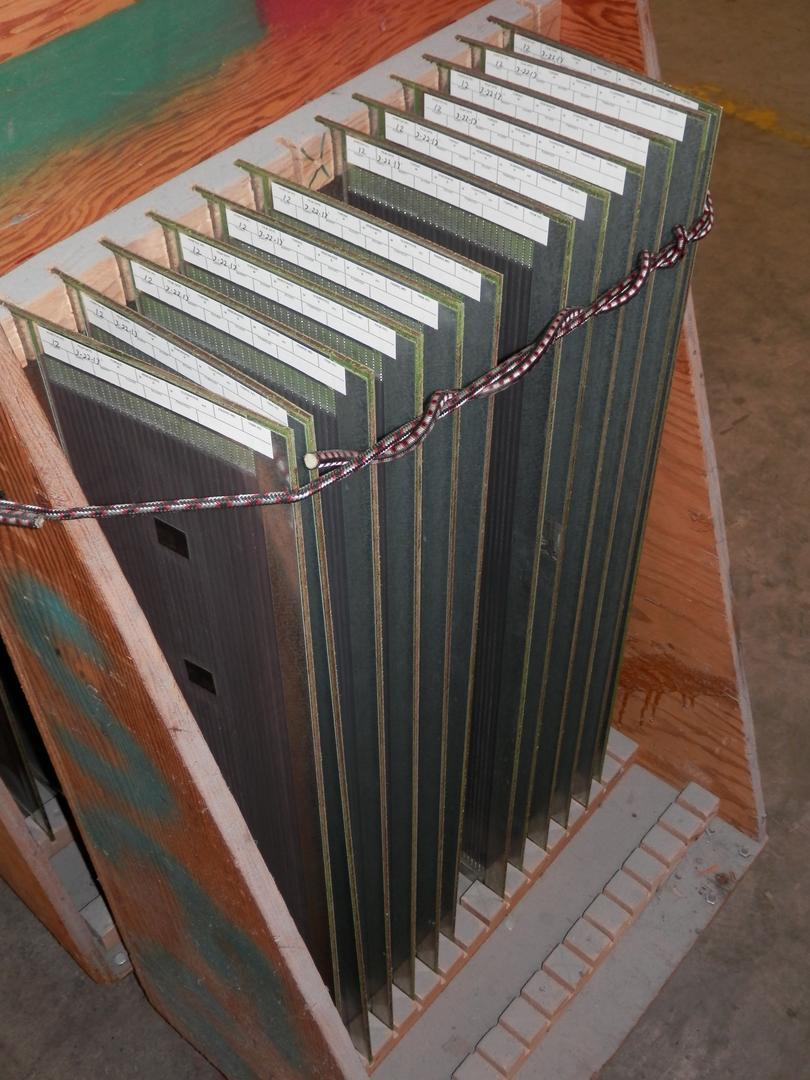
Sets of now Mylar-fitted driver assemblies await the next manufacturing step. Note that at this point each driver is marked with a sticker for tracking manufacturing steps.
Perhaps one of the most delicate assembly steps involves preparation of driver conductor arrays, which will subsequently be “married” to the driver diaphragms, as shown in this image. A very high-skilled technician first winds the conductors on a special frame (as shown), and then the frame is flipped over to lower the conductors onto a waiting diaphragm panel. The amount of dexterity required is considerable (I know this because I tried my hand—working as steadily and carefully as possible—and found I could not master the task, at least not in a short period of time).

Some Magnepan models feature wire-type conductors (as shown here), while other models use the firm’s famous “quasi-ribbon-type” conductors. Trust us on this one: those quasi-ribbon-type conductors are extremely thin and easy to break (during the assembly process, that is). Once installed on their diaphragms, however, the conductors and the resulting driver assemblies are extremely rugged and durable. Once the conductors are bonded to the diaphragms with a thin, flexible adhesive, the drivers are essentially complete.
One of the most exciting steps in the assembly process, and the one where the “Maggie” essentially becomes a Magnepan, involves “marrying” the completed planar magnetic drivers to the speaker frames. Here, a technician prepares for this step by installing frame spacers/braces (held it the technician’s right hand) and also by installing crossover network components in the lower end of the speaker frame.

Next, the planar magnetic driver is gently lowered into the speaker frame.

Using a pneumatic tool, the technician installs fasteners around the entire perimeter of the drive to hold it securely in the panel frame and then one of Magnepan’s “special sauce” assemble steps takes place. Specifically, the driver panel is fitted with precisely placed panel dampers, which are shown during installation here. (Part of Magnepan’s proprietary technology involves the use and exact placement of these essential dampers).

To enable installation of the dampers, conductors are gently re-routed around the damper clearance holes.
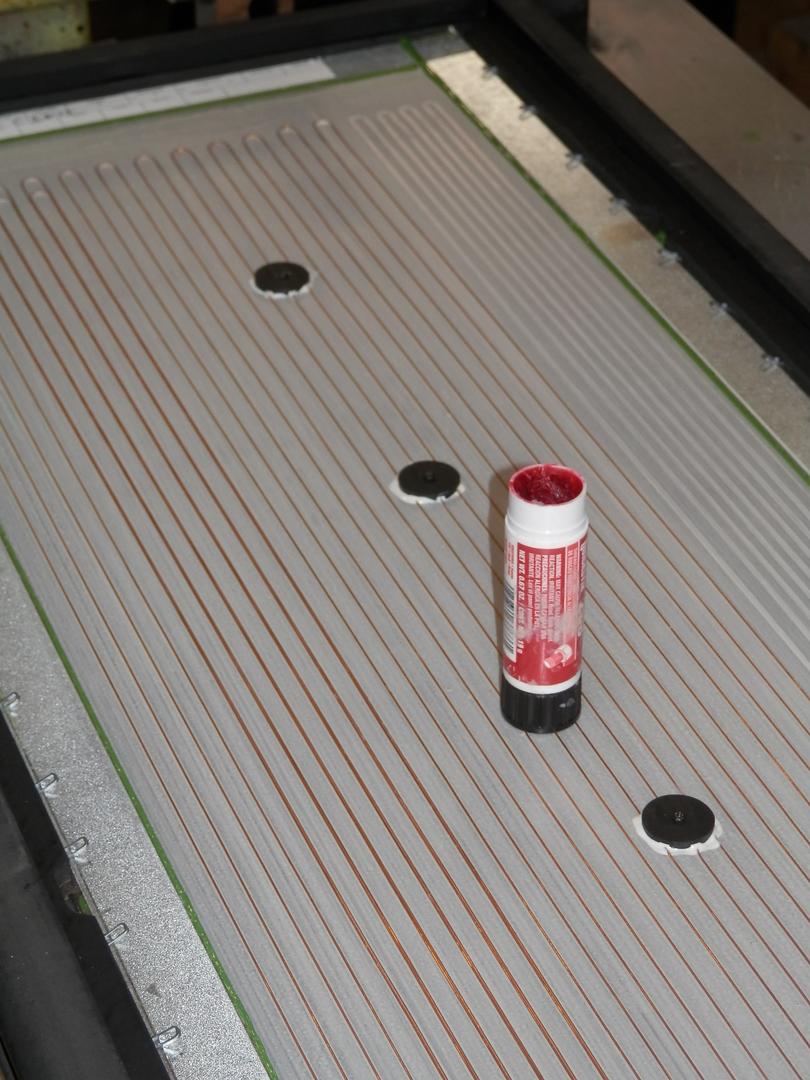
The driver panels showing dampers in place.
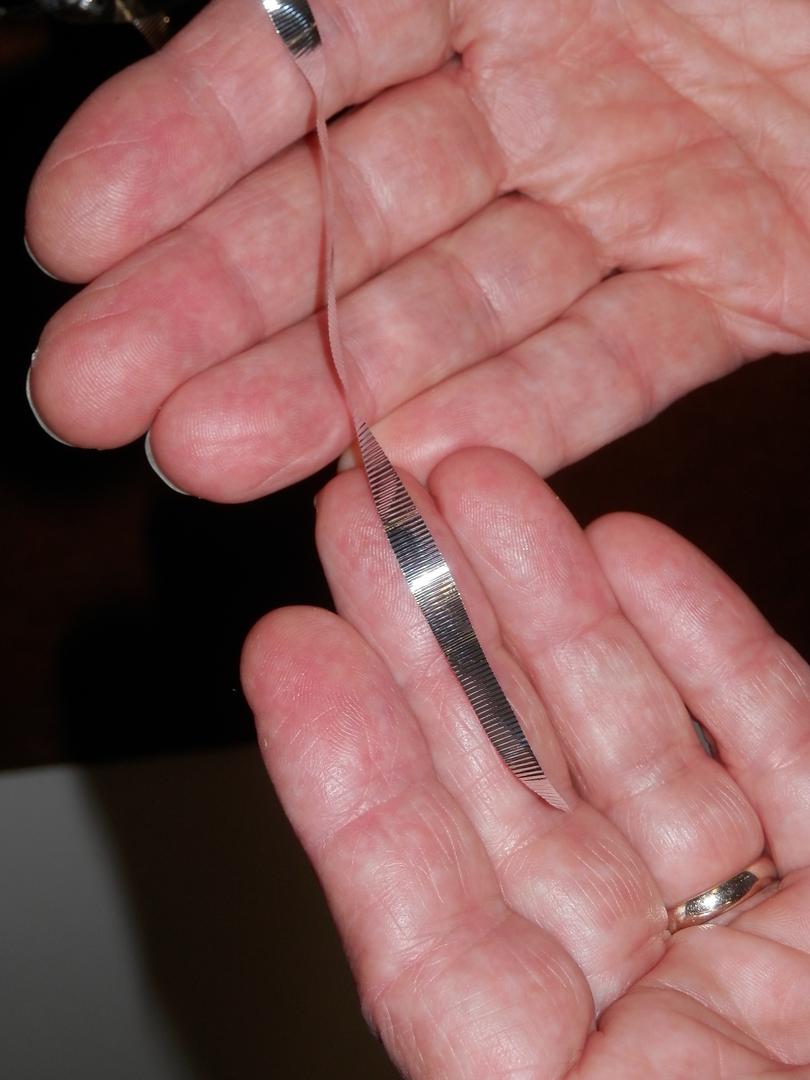
Magnepan’s top models (the 20.7, 3.7, and Mini Maggie desktop systems) all use pure ribbon tweeters where the conductor and diaphragm are one and the same. The diaphragms use these vanishingly thin, corrugated metal ribbon conductors.
Ribbon diaphragms are pre-trimmed to the correct length.

Using carefully constructed assembly tooling, the ribbon drivers are fitted to their frames and secured with dabs of adhesive. The ribbon diaphragms are so thin (much thinner than, say, typical plastic wrap as used in food preparation and storage) that it takes near surgical skill to handle them properly.

Tooling stands as used in building the ribbon tweeters for the Magnepan 20.7 and 3.7.
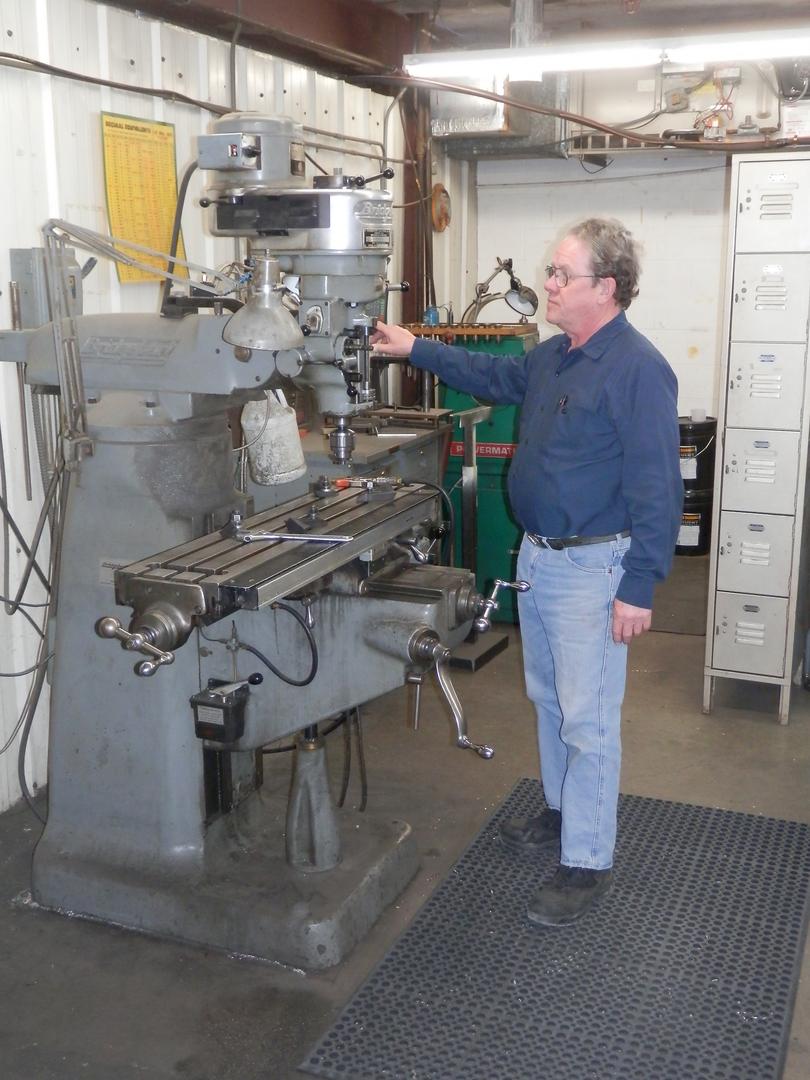
Magnepan has its own well equipped machine shop and thus can build customized assembly tooling as may be required for various of the firm’s models.
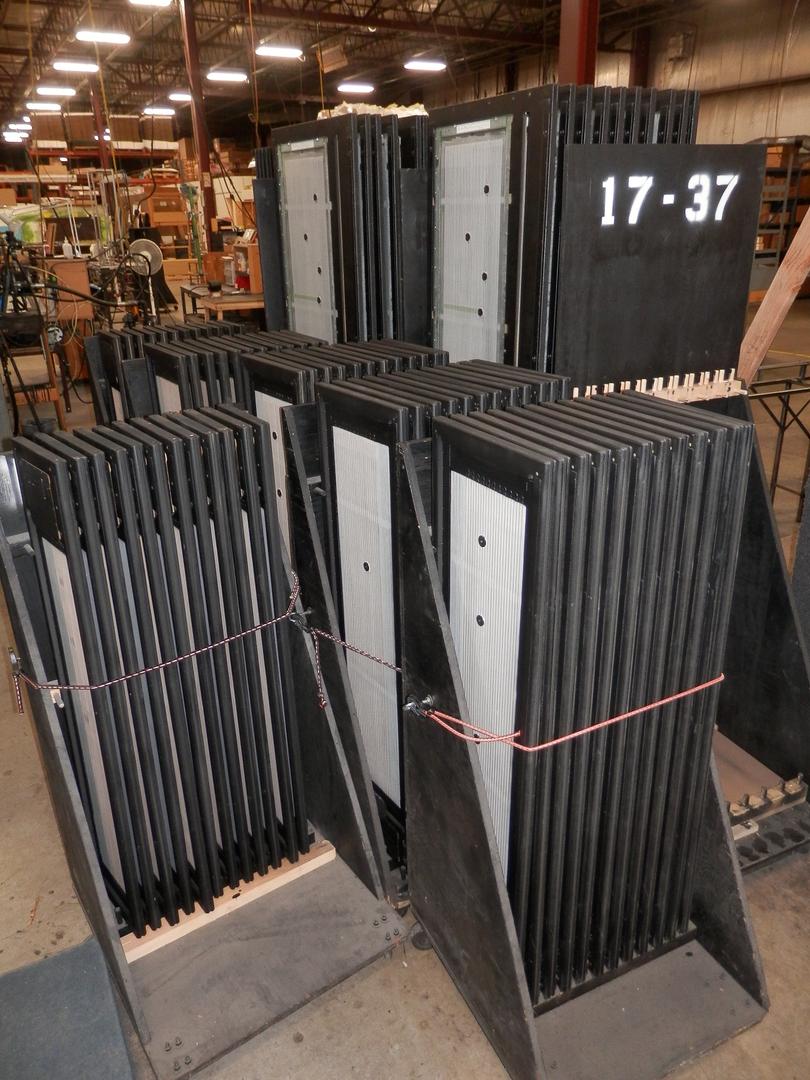
Stacks of nearly completed Magnepan models awaiting testing, trim-out, and final assembly.

A technician makes Magnepan grille “socks” to order for each pair of speakers.
Samples of Magnepan terminal block assemblies as used for each of the firm’s models.
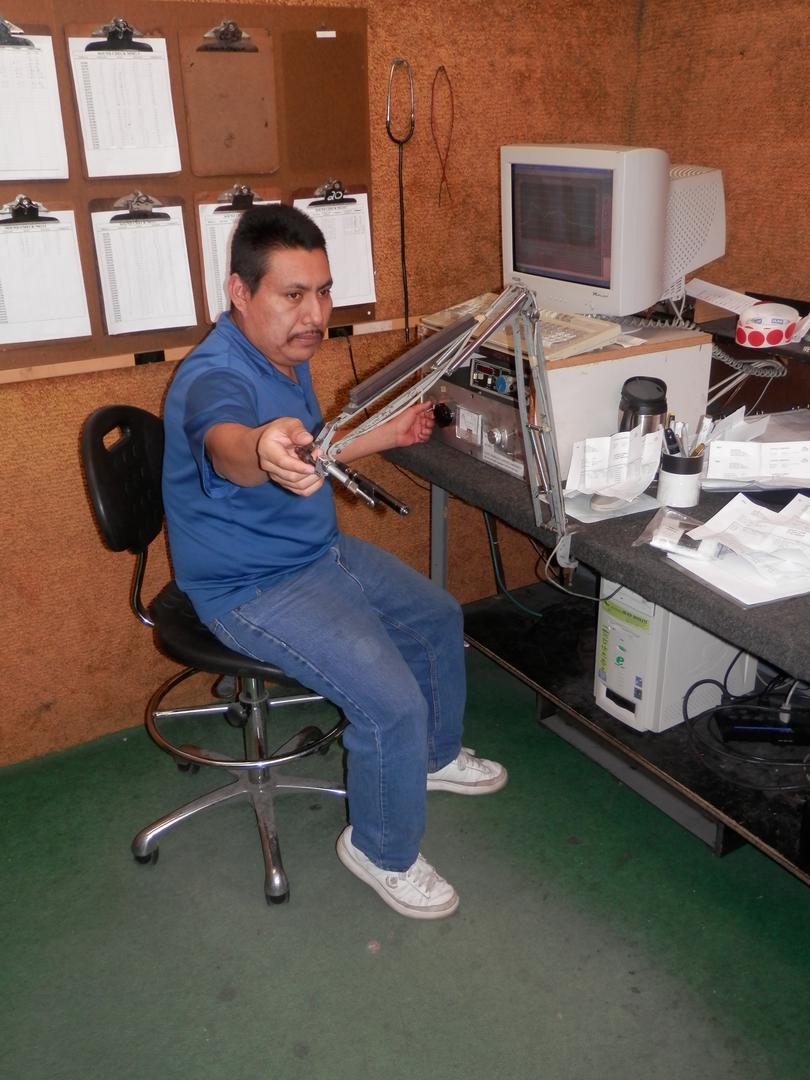
A technician prepares his test microphone and other apparatus prior to conducting a full functional test of each speaker.
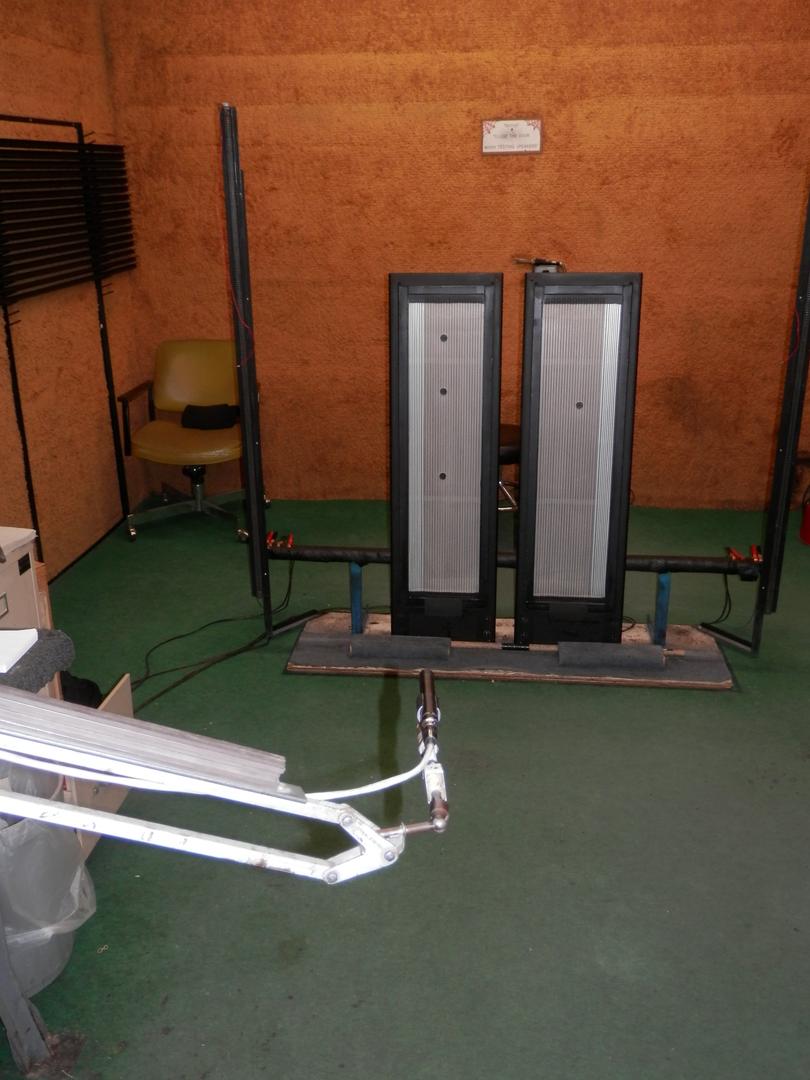
A pair of “newborn” Maggies awaits its full functional test. Eagle-eyed readers will note that the left and right Maggies use differently placed panel dampers. This is by design, to ensure that the whole system (left and right speaker playing together) has the best overall composite combination of resonance control characteristics.
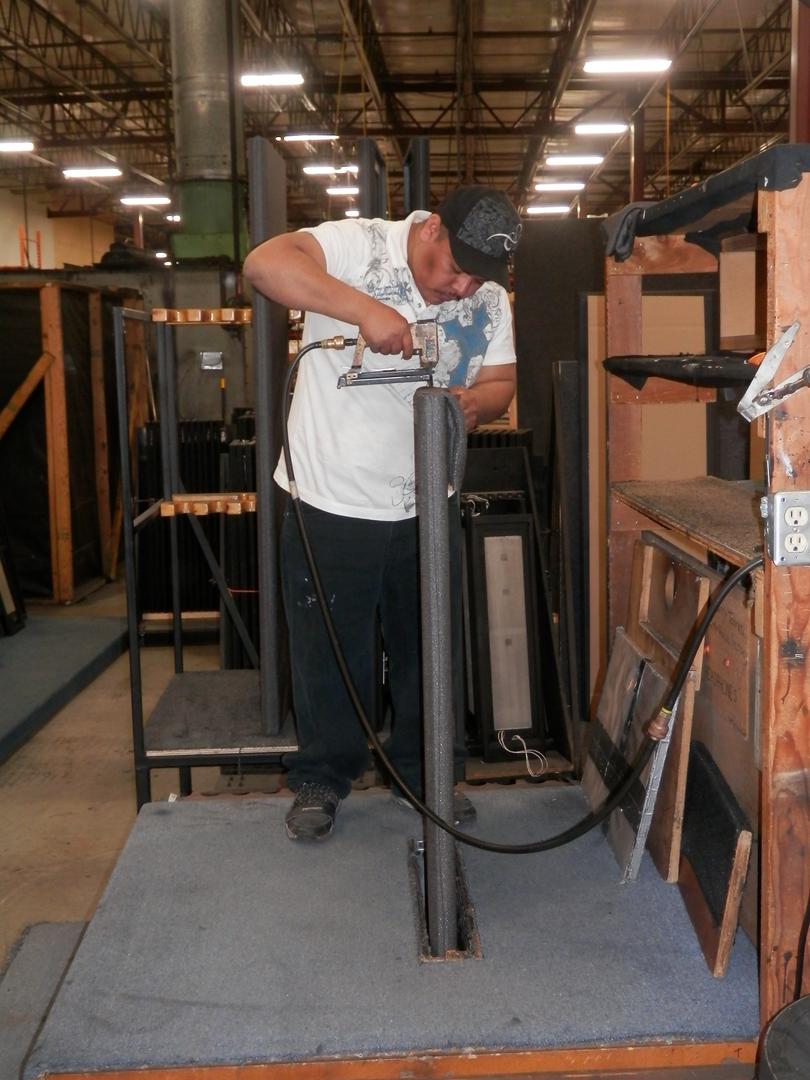
A technician fastens the grille “sock” to the bottom of a Magnepan’s frame.
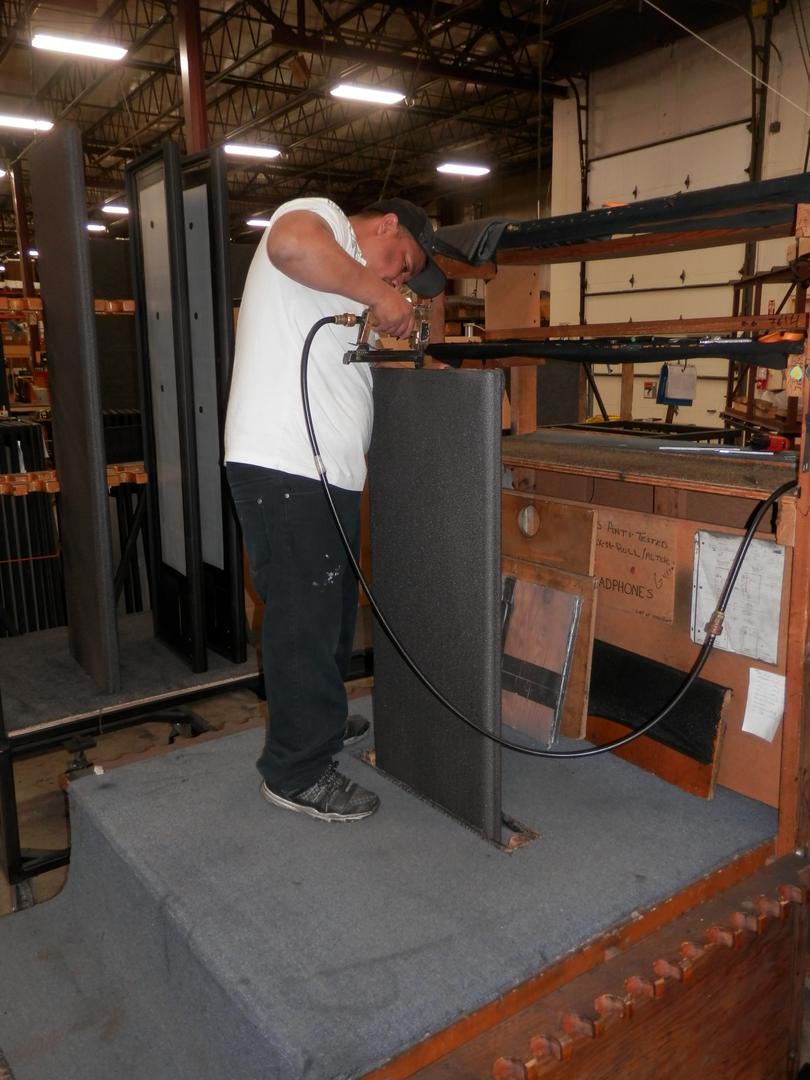
A different view of the previous assembly step: because Magnepans are quite tall, the firm built a special staircase-equipped platform to make it possible for technicians to access the bottom of a speaker stood on end. Thus, the nearly finished Maggie is lowered (top end down) through a hole in the floor of the platform and the technician climbs the stairs and uses a staple gun to fasten the sock in place.
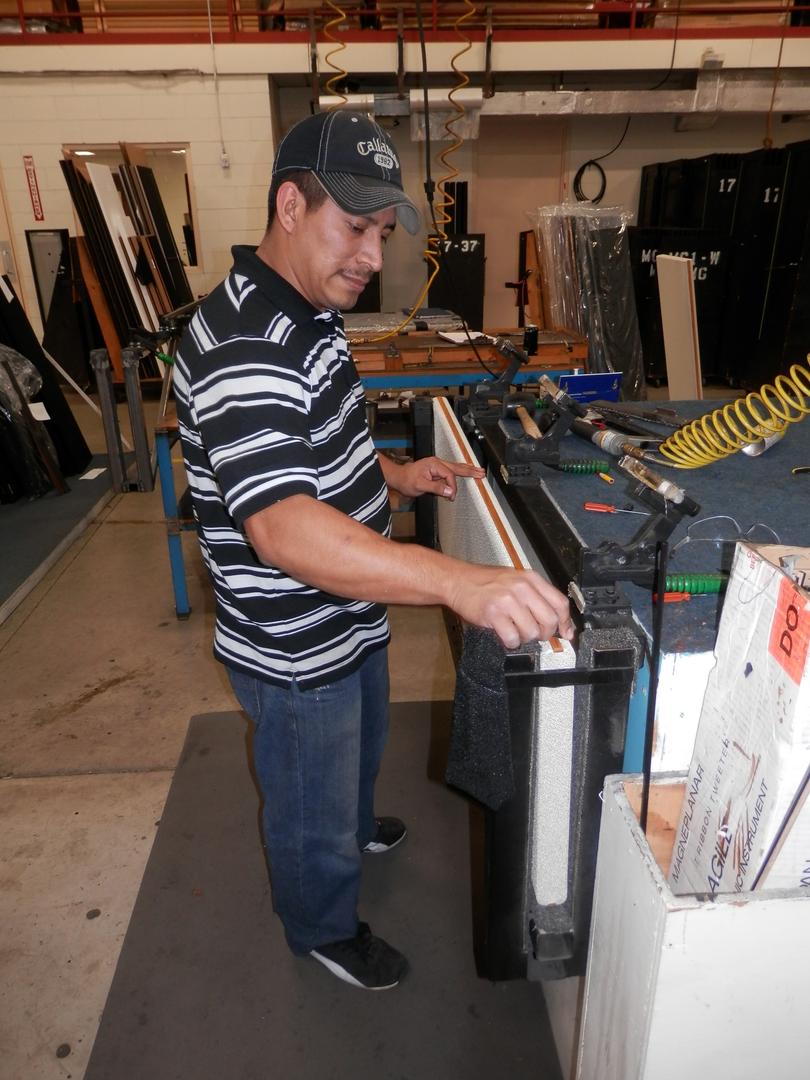
The last step: a technician installs styling trim strips as specified by the customer. This particular Maggie features an off-white grille with cherry wood trim, but other combinations (e.g., black grilles with aluminium trim) are available.

In Magnepan’s front lobby, the firm has on display a new mobile dealer demonstration stand to be used for the firm’s very high performance MMC2 on-wall loudspeaker along with a pair of Magnepan’s bass panels, both fitted out with experimental trim kits designed to make it easier for the dipolar woofers to be “hidden in plain sight.”
Magnepan’s President Mark Winey (right) and head of Marketing Wendell Diller (left) show off a mix of their creations, including the Mini Maggie (held in Mark Winey’s right hand), the flagship 20.7 floorstander (in black with silver trim), and the aforementioned MMC2 shown on its mobile dealer demonstration stand to the left of Wendell Diller. The MMC2 deserves special mention in that it is every inch a “real” Maggie in sonic terms, yet seems to “fade into the walls” in a visual sense, making it perhaps the most interior decorator-friendly model in the entire range.































